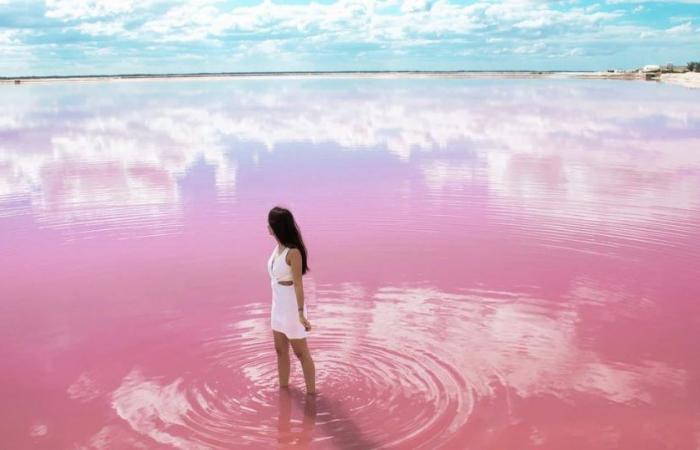The unusual bubblegum pink color of Lake Hillier on Middle Island, Australia Western, has intrigued scientists for years. However, new research suggests that this peculiar coloration It is the result of a mixture of bacteria and algae They thrive in this extremely saline environment.
The lake, located in a uninhabitable island Surrounded by a dense forest of malaleuca and eucalyptus and a narrow strip of dunes to the north, it has dazzled scientists since its discovery in 1802. Initially, it was speculated that the pink color was due to bacteria in the salt crust.
Scott Tighea researcher at the University of Vermont in Burlington, became fascinated by this phenomenon after seeing it on a television show. “I thought, that’s amazing. I have to go there and take samples and sequence everything.”Tighe said when remembering his initial reaction.
In order to study this phenomenon further, Tighe co-founded the Extreme Microbiome Project (XMP)an international collaboration aimed at genetically profiling extreme environments around the world.
He Hillier Lake, is popularly known as Australia’s pink lake. This lake is 600 meters long and 250 meters wide, and its salinity is eight times higher than that of the ocean.
Tighe crossed the ocean to Australia, to join Ken McGrathfrom the microbial genomics company Microba in Brisbane. McGrath visited the lake to collect water and sediment samples. “The collection process was exhaustive, but necessary to understand the microbial composition of the lake,” McGrath explained..
The team used a technique called metagenomics, which allows all DNA in an environmental sample to be sequenced simultaneously. This approach makes it possible to identify the genomes of the individual microbes present in the sample. The results were revealing: the lake contains almost 500 Extremophilesorganisms that can survive in extreme conditions, including bacteria, archaea, algae and viruses.
Among the extremists identified there are colorful microbes such as purple sulfur bacteria, Salinibacter ruberorange-red, and red algae Dunaliella salina. ““A mixture of these microbes, and possibly others, explains the pink color of the lake.”said Tighe.
The pigments present in these organisms, known as carotenoids, could provide them with some protection against the high salinity of the lake.
A fascinating aspect discovered in this research is that several of the microbes appear to be new to sciencealthough they have yet to be fully characterized. “These organisms not only survive, but thrive in conditions that would be lethal to most other living things,” Tighe said..
The Extreme Microbiome Project is not limited to this pink lake. They have carried out studies in other extreme environments around the world, such as the Darvaza gas crater in Turkmenistan, also known as the “Door to hell”, the Dry Valleys of Antarctica, brine lakes 3.5 kilometers under the ocean off west Greenland, and the Mobile Cave in Romania.
According to Tighe, the team now plans to take samples of the Danakil Depression in Ethiopia, which contains toxic hot springs, and Magic Lake in Australia, which is “so acidic it’s like battery acid”.
The island, although not inhabitable, attracts millions of tourists each year, who marvel at the striking contrast of the pink of the lake, the green of the surrounding vegetation and the blue of the ocean. Although the lake water has no known toxicity or adverse effects if ingested in small quantities, the high salt content could cause severe dehydration or multiple organ failure if consumed in excess. In particular, it could cause severe dehydration and multiple organ failures in extreme cases.
The unusual coloration of Lake Hillier turns out to be a wonderful manifestation of the adaptive capacity of life on the planet. Through international collaboration and the use of sophisticated sequencing techniques, scientists are closer to unraveling the mysteries of these extreme environments.






